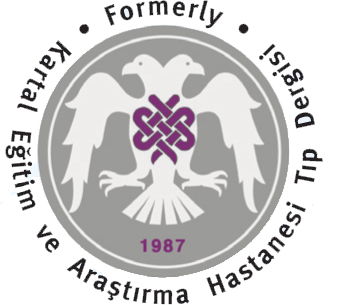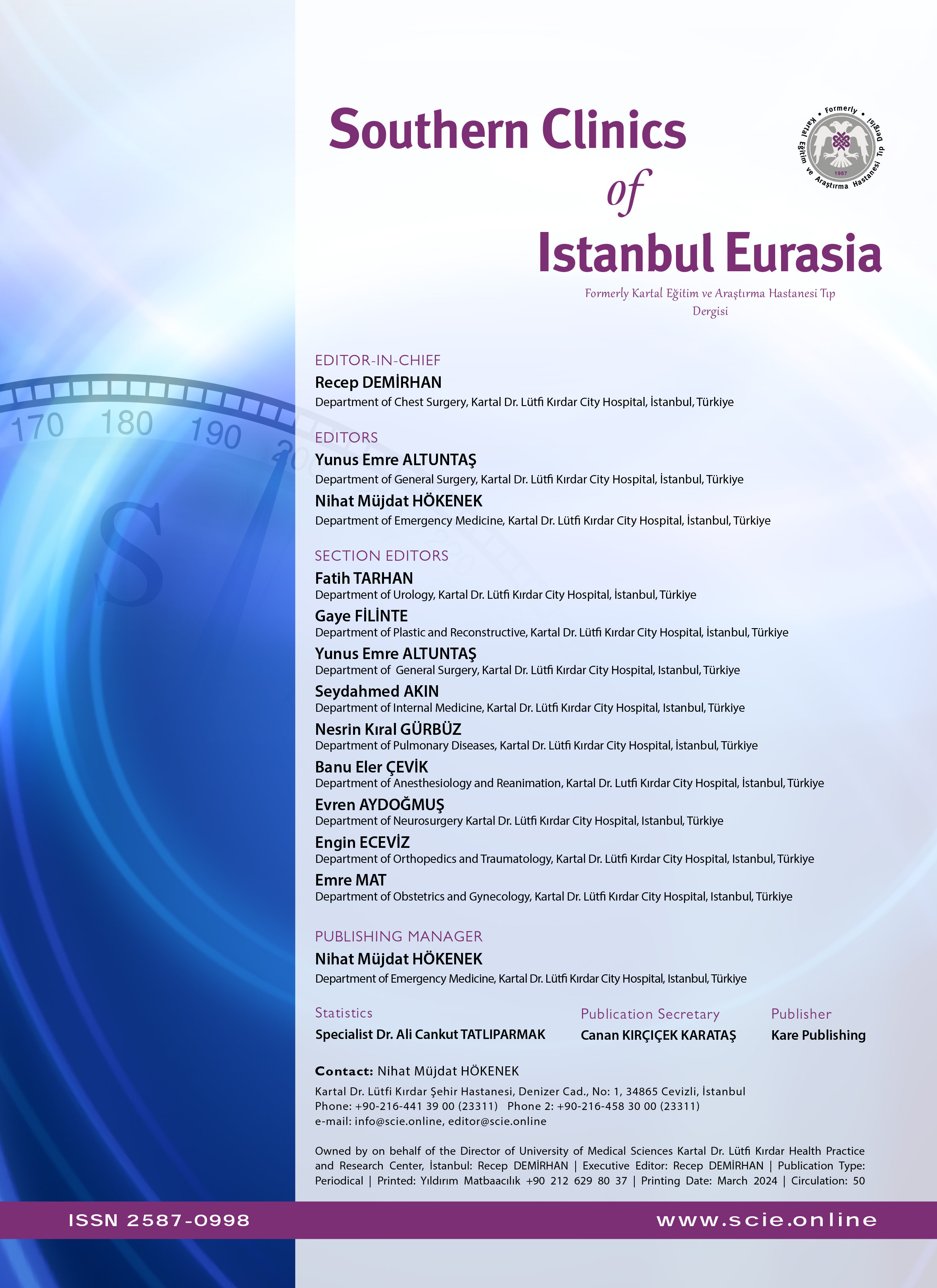Evaluation with short-term follow-up of the factors affecting the success of Pavlik harness treatment for developmental dysplasia of the hip
Seyit Ali Gümüştaş1, Güven Bulut2, Mehmet Müfit Orak3, Talat Çağırmaz4, Tolga Onay5, Halil İbrahim Bekler21Yavuz Selim Bone Disease And Rehabilitation Hospital,orthopedics And Traumatology Clinic, Trabzon2Kartal Lütfi Kırdar Education And Research Hospital, Orthopedics And Traumatology Clinic, İstanbul.
3Fatih Sultan Mehmet Education And Research Hospital, Orthopedics And Traumatology Clinic,i̇stanbul.
4Bağcılar Hospital, Orthopedics And Traumatology Department, Istanbul
5Marmara University Pendik Education And Research Hospital, Orthopedics And Traumatology Clinic.
OBJECTIVE: The aim of this study is to assess the factors affecting the success of early treatment for developmental dysplasia of the hip (DDH) with the Pavlik harness over the course of short-term clinical follow up.
METHODS: We evaluated the medical records pertaining to 55 patients (76 hips) who were diagnosed with DDH by ultrasonography (USG) and treated using the Pavlik harness. Physical examination findings at the beginning of treatment, risk factors associated with DDH, hip types as determined by the Graf method, and age at the start of treatment were evaluated as potential factors related to the results of Pavlik harness treatment.
RESULTS: The average age at the time of treatment by Pavlik harness was 2.80±1.97 months. Mean usage time was 3.80±1.73 months and mean follow-up time was 20.9 months (6-46 months). While treatment with the Pavlik harness was successful in 48 patients (68 hips-89.5%), 7 patients (8 hips-10.5%) exhibited closed reduction and hip spica cast. Multivariate analysis identified the presence of a dislocated hip (Graf type 3 and 4) (p=0.010), breech presentation (p=0.030), and history of swaddle (p=0.003) as factors adversely affecting the success of a Pavlik harness treatment.
CONCLUSION: Age at the start of treatment and the use of swaddling are modifiable factors that affect treatment success rate. The rate of treatment success is increased by early detection of DDH cases through proper screening. The risk of the DDH can be reduced and efficacy of treatment interventions improved through the education of parents regarding swaddling techniques.
Gelişimsel kalça displazisinde Pavlik bandajı ile tedavinin başarısını etkileyen faktörlerin kısa süreli takiple değerlendirilmesi
Seyit Ali Gümüştaş1, Güven Bulut2, Mehmet Müfit Orak3, Talat Çağırmaz4, Tolga Onay5, Halil İbrahim Bekler21Yavuz Selim Kemik Hastalıkları Ve Rehabilitasyon Hastanesi, Ortopedi Ve Travmatoloji Kliniği, Trabzon.2Lütfi Kırdar Kartal Eğitim Ve Araştırma Hastanesi, Ortopedi Ve Travmatoloji Kliniği, İstanbul
3Fatih Sultan Mehmet Eğitim Ve Araştırma Hastanesi, Ortopedi Ve Travmatoloji Kliniği, İstanbul
4Özel Bağcılar Hastanesi, Ortopedi Ve Travmatoloji Kliniği, İstanbul
5Marmara Üniversitesi Tıp Fakültesi Pendik Eğitim Ve Araştırma Hastanesi, Ortopedi Ve Travmatoloji Kliniği, İstanbul
AMAÇ: Gelişimsel kalça displazisinin (GKD) Pavlik bandajı ile tedavisinin başarısını etkileyen faktörleri kısa süreli takiple değerlendirmek.
YÖNTEMLER: Çalışmamızda ultrasonografi (USG) ile GKD tanısı konup Pavlik bandajı ile tedavi edilen 0-6 ay arası 55 hasta (76 kalça) incelendi. Tedavi başlangıcındaki fizik muayene bulguları, GKD açısından tanımlanmış risk faktörleri, kalçaların Graf metoduna göre tipleri ve tedavi başlangıç yaşı ile Pavlik bandajı tedavisinin sonuçları karşılaştırıldı. Elde edilen verilerin tedavi sonucuna etkileri analiz edildi.
BULGULAR: Pavlik bandajı ile tedaviye başlama yaşı ortalama 2.80±1.97 ay, Pavlik bandajı kullanım süresi 3.80±1.73 ay, ortalama takip süresi 20.9 ay (6-46 ay) idi. Hastaların 48inde (68 kalça-%89.5) Pavlik bandajı ile tedavi başarılı olurken, yedisinde (8 kalça-%10.5) kapalı redüksiyon ve pelvi-pedal alçı yapılması gerekti. Tedavi öncesi kalçanın disloke (Graf tip 3 ve 4) olması (p=0.010), makat gelişi (p=0.030) ve kundak kullanım öyküsü varlığı (p=0.003) çok değişkenli analizde Pavlik bandajı tedavisinin başarısını olumsuz etkileyen faktörler olarak tespit edildi.
SONUÇ: Tedaviye başlama yaşı ile kundak kullanımı başarı oranına etki eden değiştirilebilir faktörlerdir. Tarama ile GKD olguları erken saptanarak tedavi başarısı artırılabilir. Ayrıca ülkemizde halen sorun olan kundak ile mücadele edilerek GKD riski azaltılabileceği gibi, Pavlik bandajı ile erken dönem tedavinin başarısı da artırılabilir.
Corresponding Author: Tolga Onay, Türkiye
Manuscript Language: Turkish



















